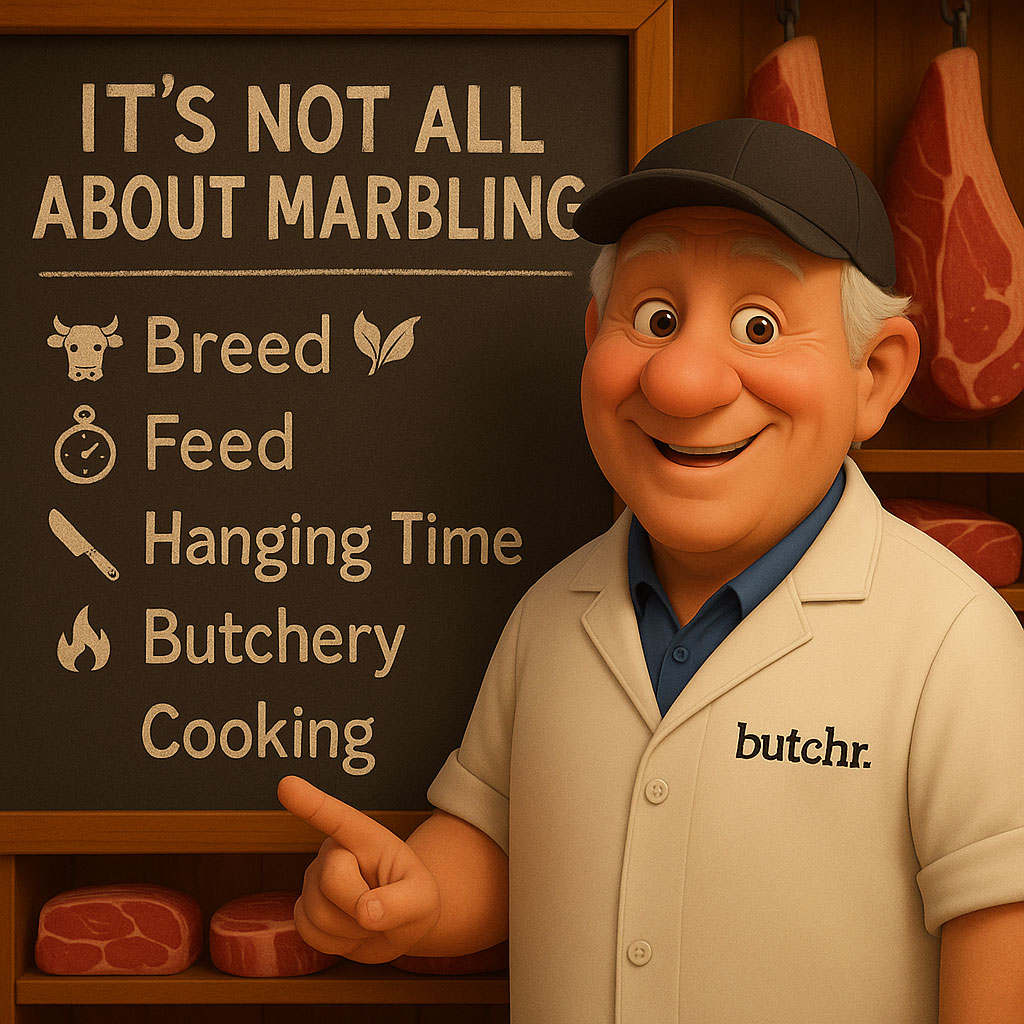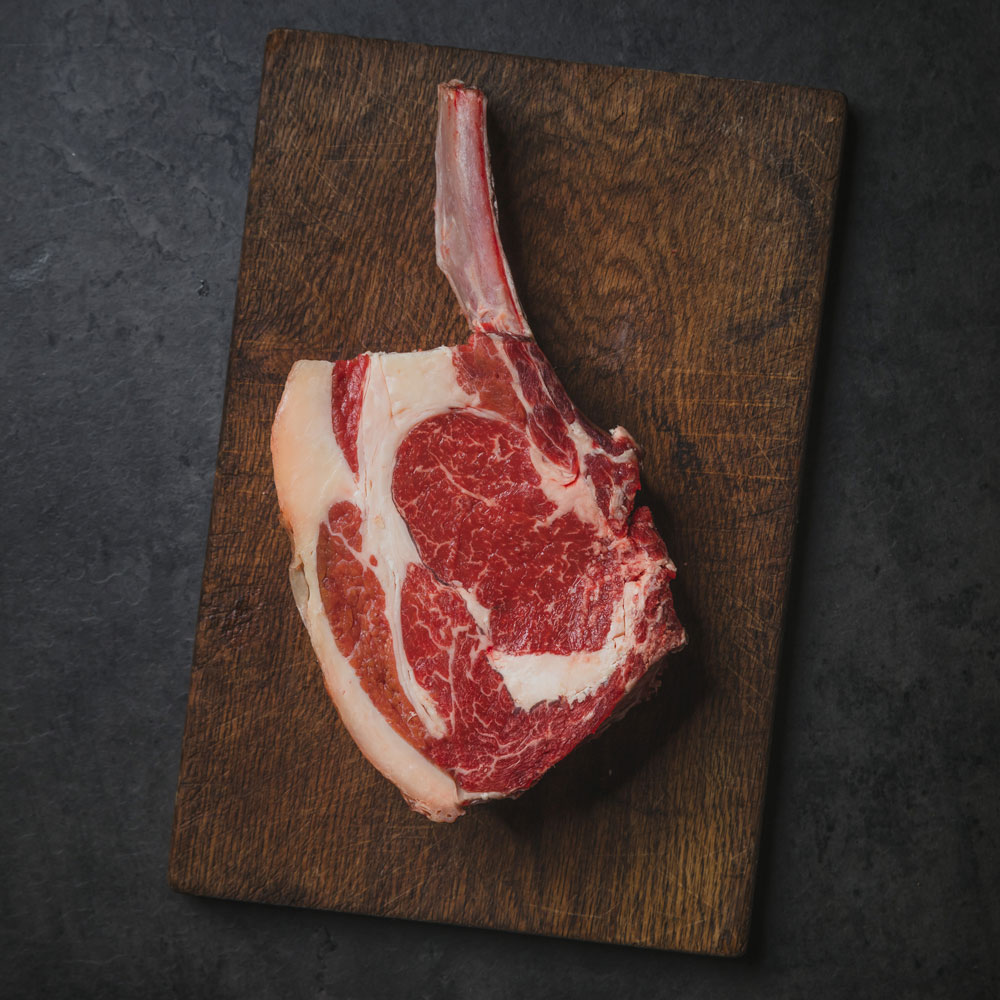
Understanding What Really Affects Meat-Eating Quality
Marbling. It’s the word that gets thrown around constantly when people talk about “quality meat.” Flick through a steakhouse menu or an online butcher’s site and you’ll see it everywhere – usually with a nice close-up photo of a steak looking like it’s been tattooed by a white pencil.
And don’t get me wrong – marbling does matter. That intramuscular fat melts during cooking, adds richness, and gives a steak that buttery texture people love.
But here’s the thing: marbling isn’t everything.
In fact, I’d argue it’s just one small piece of the puzzle when it comes to meat that truly delivers on flavour, tenderness, and overall eating enjoyment. Let me walk you through the rest of the picture.
Different breeds produce different types of meat – it’s that simple. Take a Dexter or a Hereford and compare it to a commercial Holstein or a Limousin cross. The eating quality varies massively.
Native and heritage breeds like Angus, Hereford, and Red Ruby Devon often produce meat that’s naturally more flavoursome, even if it doesn’t have that heavy marbling you see in say Japanese Wagyu. The slower growth and traditional rearing methods give the meat time to develop character.
In short: some animals are just built for taste, not bulk.
Grass-fed. Grain-fed. Finished on silage. Fed on sweets and beer (hello, Kobe).
What an animal eats during its life has a huge impact on the flavour and texture of the meat. Grass-fed beef tends to be leaner but often has a richer, more “beefy” flavour. Grain-finishing adds fat and softens the meat, but it can also mellow the taste.
Outdoor rearing, natural grazing, low-stress handling – these all matter. A happy, slow-grown animal will produce better meat than one that’s been pushed for fast weight gain.
You can take the best-reared, best-fed beast in the world and still end up with tough, dull meat if it’s not hung properly.
Dry ageing allows enzymes to naturally break down muscle fibres, which improves tenderness and concentrates flavour. We hang our beef for a minimum of 28 days, and some cuts even longer, because it makes all the difference.
Supermarket meat often isn’t hung long enough (if at all) because time is money. But if you want meat that eats like a dream – patience pays off.
Cutting meat properly is an art – and yes, I might be a bit biased here – but good butchery matters.
Knowing where to cut from, how to trim, and how to portion affects everything from how it cooks to how it eats. Slicing across the grain, leaving in the right fat cover, removing silverskin – all of it helps the final product shine.
If a piece of meat is prepped by someone who knows their craft, it shows on the plate.
You’d be amazed how often someone blames the meat, when it’s actually the pan (or the cook!) that’s the problem.
You can ruin a beautifully aged, nicely marbled steak in 60 seconds flat with a pan that’s too cold, or by cooking it to oblivion. Similarly, a lean cut that’s slow cooked properly will reward you with stunning results – even if it looked “boring” to begin with.
Meat needs respect, not just heat.
Don’t get caught chasing marbling alone. It’s flashy, yes – but it’s not the only measure of quality. Some of the best steaks I’ve ever had came from leaner cuts, traditionally reared animals, and meat that had been properly aged, cut, and cooked with care.
Next time you’re choosing meat, think beyond the fat streaks. Ask about the breed, how long it’s been hung, where it was reared. Or better yet – ask your butcher. (Hint: that’s me.)
Because great meat isn’t about one shiny feature. It’s about everything working together – from field to fork.



Here's a handy chart to help determine the right portion sizes for meat joints based on appetite size:
| Appetite Size | Boneless Meat (g per head) | Bone-in Meat (g per head) |
|---|---|---|
| Small Appetite | 125–150 g | 200–250 g |
| Medium Appetite | 150–200 g | 250–300 g |
| Large Appetite | 200–250 g | 300–350 g |
| Extra Large Appetite | 250–300 g | 350–400 g |
These portions are for the main course. If the meat is part of a larger meal with substantial sides, you could reduce the quantities slightly. For feasts or special occasions where people may indulge, consider the higher end of the range.
